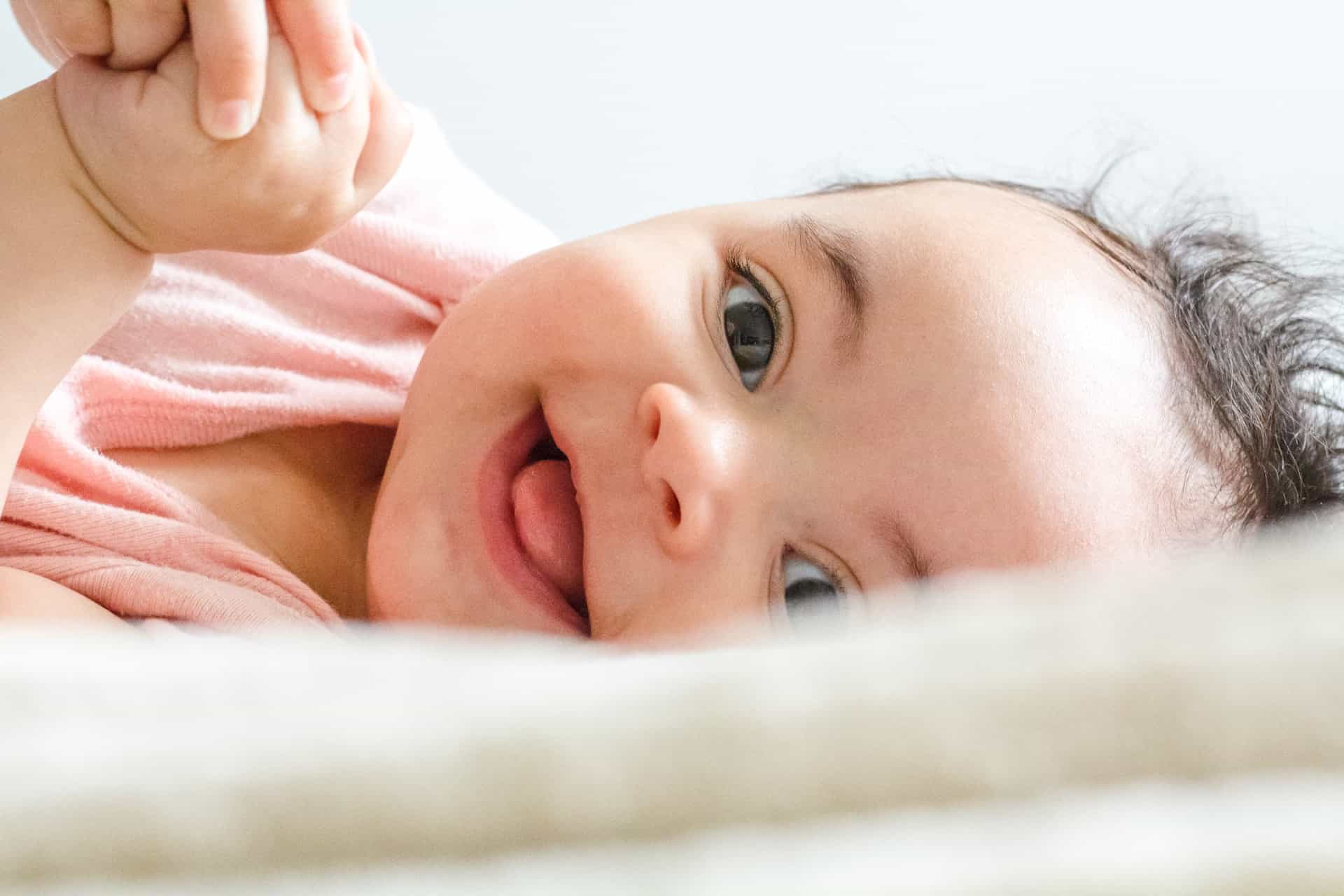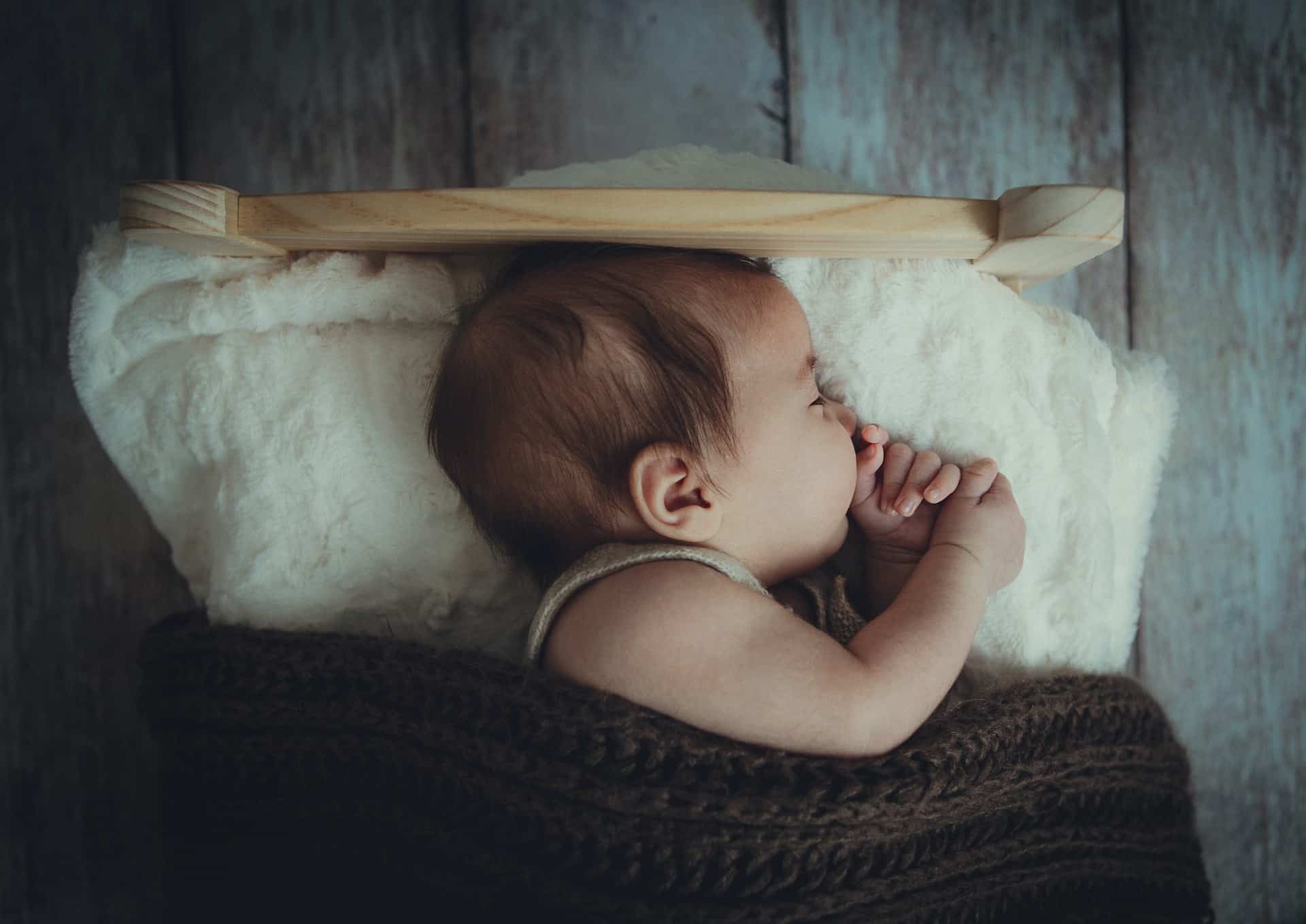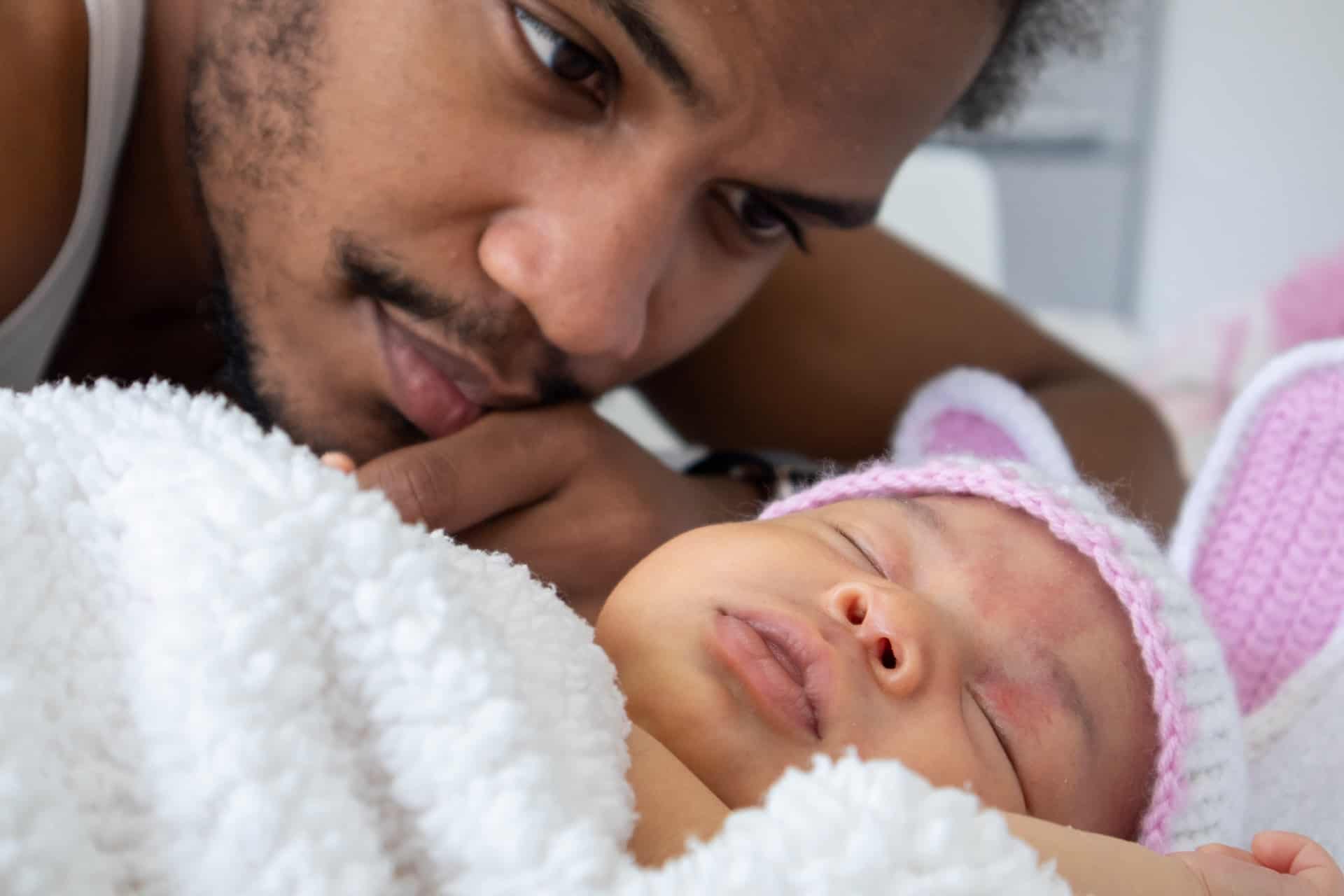So your child is sleeping just fine until all of a sudden one day, out of nowhere, sleep seems to go out the window. They could be taking longer to fall asleep, waking up in the night, or struggling to nap. When a child who once slept well suddenly starts to struggle with sleep, we call that a Sleep Regression. Let’s kick off this baby sleep regression guide by seeing what exactly a sleep regression is.
What is a Sleep Regression?
A Sleep Regression isn’t quite what it sounds like. During this time your child still knows how to fall asleep, but something new is now starting to distract them from sleep, so it seems like they are regressing from a sleep abilities perspective, however, this isn’t actually true if your child was already sleeping independently to start. A Sleep Regression is caused by developmental milestones.
Developmental milestones are actually a sign that your child is in the process of going through an amazing transformation, either cognitively or physically (or often both). Things like learning to roll, sit, crawl and walk are physical developmental milestones, and learning about object permanence, how to sort objects, and recognizing patterns are cognitive developmental milestones. These milestones are very exciting yet scary for babies and toddlers.
These new skills present a new world that can be frightening but also very exciting. This is why children can go through periods of anxiety as well as frustration, play, and repetition during the time when they are offered sleep (nap time, bedtime, and during the night). This is why it is often labeled as a “Sleep Regression”.
If your child has been Sleep Trained, then they are not actually regressing in terms of ability to fall asleep independently, but are more focused on practicing new skills rather than sleeping. Bottom line is, this is a very normal period of development and one you can foster by offering more sleep.
The Ages and Stages of Sleep Regressions
4 Months Old: The dreaded “4 Month Regression”. This is when your infant transitions out of Newborn sleep, where they slept in shorter sleep cycles, to the way we all sleep, with longer sleep cycles. At this time the body’s Circadian Rhythm has also formed. This means that as the night goes on, a baby will move from being in a deeper sleep to a much lighter state of sleep in the early morning hours.
This is very new to your baby and that lighter early morning sleep takes some time to get used to. I’m sure you can relate to how hard it is to fall back to sleep at 4:00 AM vs 12:00 AM. Babies at this age typically wake and cry because they are still tired and want to fall back to sleep, but are frustrated that it’s difficult to fall back to sleep. Rest assured that all your baby needs at this point is to practice without any distractions, and they’ll get the hang of it.
4 – 5 Months Old: Rolling, rolling, rolling! This is the age most babies begin to experiment with rolling. You’ll notice in the crib they start to move their legs a lot, touch their feet, or slam their feet onto the crib mattress. Those are some signs your baby is getting ready to roll. Regardless of which stage your baby is at, rolling is a very significant yet disruptive milestone to sleep, because it involves new and sometimes scary motor skills that give a very different perspective.
Up until now, your baby has been pretty stationary on their back, not being able to be in control of significant shifts in their body’s position. So when your baby rolls in the crib for the first time, it can be an exciting but also a scary thing. That quick head rotation done in the dark can often startle babies. To add to this, your baby actually wants to sleep on their tummy!
Babies feel safer sleeping on their tummy with the vital organs protected, so wanting to flip to the tummy is a big motivator! Again, with practice, patience and time, your baby will get used to it and go back to sleeping peacefully.
6 Months Old: Most parents begin solids around this age which can be an exciting time. Independent sitting also shows up around 6 months, giving your baby a new outlook on their world. Both of these things in combination can be a bit overwhelming, leading to some sleep struggles, so remember to go at your baby’s pace if you’re noticing new sleep struggles.
8 – 10 Months Old: So much going on now! Sitting, crawling, standing, language and new cognitive skills like Object Permanence! This is one of the more difficult sleep periods for babies because there are so many new developmental milestones happening. New motor skills can be so exciting that babies want to practice them any chance they get, including at nap and bed time.
Babies may start to experience some social anxiety at this time as well because learning about Object Permanence means that they now understand that they are a separate being from their mother, and that mom and dad have the ability to move farther away.
12 Months Old: Around this time many children are experimenting with standing, cruising, or walking. This new vertical approach to the world can be fun but also scary at the same time. Often the draw to practice these skills shows up in skipped naps, making many parents feel the need to drop a nap.
However, this phase is temporary and skills take longer to learn if a child isn’t well rested or being offered the appropriate amount of sleep. Keep the naps during this time, even if your child skips it, there is a great benefit to that downtime. The naps will sort themselves out once the skill is mastered.
18 Months Old: This sleep regression is largely behavioral. At this age, toddlers are starting to learn about boundaries and rules. They test these boundaries to see which ones are solid and which can be bent, which is why you may see protesting at nap or bedtime.
Hold firm on the boundaries you’d like to keep and your toddler will actually appreciate it. Knowing that a boundary is firm can bring them a lot of safety and security because it helps them predict their environment and caregivers’ actions.
24 Months Old: While your child is still learning about boundaries at this age, they are now dealing with big emotions and a language burst. The emotional center of the brain is coming online and developing at a fast pace. These feelings are bigger and sometimes uncontrollable, which is a very scary thing for little humans! In addition, toddlers at this age are learning how to communicate at a very fast pace.
It can be fun and exciting, so exciting that they want to practice these skills 24/7, regardless of how sleepy they feel. Foster these skills during the day and offer lots of time for sleep to stay on track. This definitely isn’t the age to move bedtime later!
How to Manage Your Child’s Sleep Through a Sleep Regression
If your child was sleeping well before, try to remember that this phase is temporary and they will be sleeping well again in a couple of weeks as long as no new unsustainable sleep associations are introduced, and they are offered more (not less) sleep.
- Some children need more sleep during regressions so if you see sleepy cues (yawning, crankiness, rubbing eyes), move nap or bedtime up.
- With all that missed sleep due to the new developmental milestones, you should offer plenty of opportunities for sleep to prevent them from becoming overtired. Early bedtime is key during any sleep regression.
- Make sure you’re using a consistent nap and bedtime routine. Routines make children feel safe and secure, especially when they are going through so many new things.
- Help your child master their newfound skills during the day. Practice rolling, work on some strengthening exercises, talk to your child regardless of their skill level, and let them explore. The sooner they master the skill, the sooner they’ll get back to sleeping well.
- Try not to change your response at night or during naps. If you introduce a sleep association that is not sustainable for you long term, you’ll have a very difficult time coming out of the sleep regression, and possibly extend it creating a new sleep issue.
- Ensure your child is sleeping in the optimal sleep environment. It should be quiet (using white noise), dark, and cool.
Products We Like for Managing Through Those Developmental Milestones
Toys that light up and make noise are great to encourage rolling over, crawling, or pulling to stand. For example, put a toy like the Press & Glow Spinner from Bright Stars on a raised surface to encourage your baby to strengthen their leg and core muscles in order to master crawling. The same toy can be used when your baby is laying on their back to encourage rolling from back to tummy.
Build your child’s cognitive skills with toys that match sounds and words with pictures like the Inno Pad. Another great toy is the Montessori Object Permanence Box which helps your child learn about where objects go when they can’t see them.
If your child is great at standing and cruising, a walker is a great way to practice taking steps while strengthening the stabilizer muscles and building balance skills. The VTech Sit-to-Stand Learning Walker is an excellent choice, complete with wheel locks, a removable activity board, and more.
When going from cruising to independent steps, try getting your child to hold a beach ball while you hold the other side of the beach ball, encouraging them to take steps forward. As they move with you, try to take your hands off the ball a few seconds at a time. This can build a child’s confidence and when ready, can be a fun way to take it to the next level.
You can also use household objects like a laundry basket to help your baby practice independent sitting skills. The sides of the basket offer railings at the right height for your baby to hold onto when needed, and prevent big falls. Fill a laundry basket with plastic balls for lots of sensory fun!
Other Resources to Help Your Child Master Those Developmental Milestones
Here are a few great resources to learn about how to help your child make progress on those new skills, so that they can get back to sleeping well!
FAQs
Question: Should I Change My Child’s Bedtime Routine or Offer More Reassurance at Night During Sleep Regressions?
Answer: Keep things consistent. Keep the same bedtime and nap time routine. Hold the limit on your boundaries. Listen to their upsets and over time things will calm down. Consistency equals comfort. When a child can predict our behaviour and the outcome, that allows them to feel safe and secure because it brings a sense of understanding to their world.
Question: Should I Just Wait for the Sleep Regression to be Over to See if my Child Will Start Sleeping Well?
Answer: Often parents think that waiting it out is the only thing they can do when it comes to getting back to good sleep, post-sleep regression. But that’s actually not the best strategy, at least not by itself. What you do during this time impacts your child’s ability to sleep post-regression. If you have an independent sleeper, then you’ll want to offer as much sleep time as you can.
Even if your child is playing around, not looking tired at all, that time is still very important when it comes to practicing their new skill, working towards mastering it, and falling asleep when they are ready. If you don’t have an independent sleeper (your child needs rocking/paci replacement/singing/stroller walk, etc) in order to either fall asleep or fall back to sleep, then you’ll want to work on independent sleep now, in order to get them sleeping well.
Sleep regressions do rack up a sleep debt that can make sleep much more difficult after a regression has ended, and if your child isn’t able to fall asleep on their own, then it’ll make it seem like the sleep regression is never ending, even after your child masters that new skill they were working on.
Question: My Child Can’t Fall Asleep Independently. Can I Sleep Train While my Child is Going Through a Sleep Regression?
Answer: Absolutely, yes you can. A regression is just a sleep disruption because your child is more interested in learning new skills. During this time your child is collecting a sleep debt because of the sleep disruptions going on. Pretty soon all of the sleep debt they’ve accumulated will cause things like night wakes, crying at bedtime, early rising, and difficulties with naps. This will go on for a prolonged period of time, and make it very difficult to know when the regression has ended.
The child will continue to have poor sleep even after the skill has been mastered if they aren’t able to get the proper sleep they need. A way out of this cycle is to help your child learn how to fall asleep independently. If we sleep train during the Sleep Regression, then they will be able to catch up on some of the sleep debt they’ve accumulated, and once the regression is over, they will continue to fill their sleep tank and come out much happier and well-rested than when they went into the Sleep Regression.
Make sure to use an age-appropriate circadian rhythm-based sleep schedule like the one I use with my clients to help minimize crying and the length of time it takes to learn.
Question: Is Teething a Form of Sleep Regression?
Answer: No, teething is something that will be relatively consistent through the first 18 months of a child’s life and persist periodically until about 2.5 years when your child’s final set of molars come in. Teething doesn’t cause the same type of sleep disruptions that Sleep Regressions do which is why it isn’t technically classified as a Sleep Regression.
In Conclusion
If your child slept well before the sleep regression, follow the tips above and be patient. Your child will sleep again! If the sleep regression is not getting better after 4 – 6 weeks, reach out to a professional for guidance. A pediatrician, Occupational Therapist, Physiotherapist, or Sleep Consultant offers a wealth of information and can set you on the right track. Never hesitate to reach out to someone if you have any concerns about your child.
If your child was already struggling with sleep before the regression, you’ll want to make some changes in how you manage their sleep, as a sleep regression will only add to the sleep debt your child is carrying. I’m a Certified Child Sleep Consultant and helping families achieve healthy sleep is my passion. I offer free Discovery Calls so you can get to know me and how I can support you through any challenge.
Read also:




